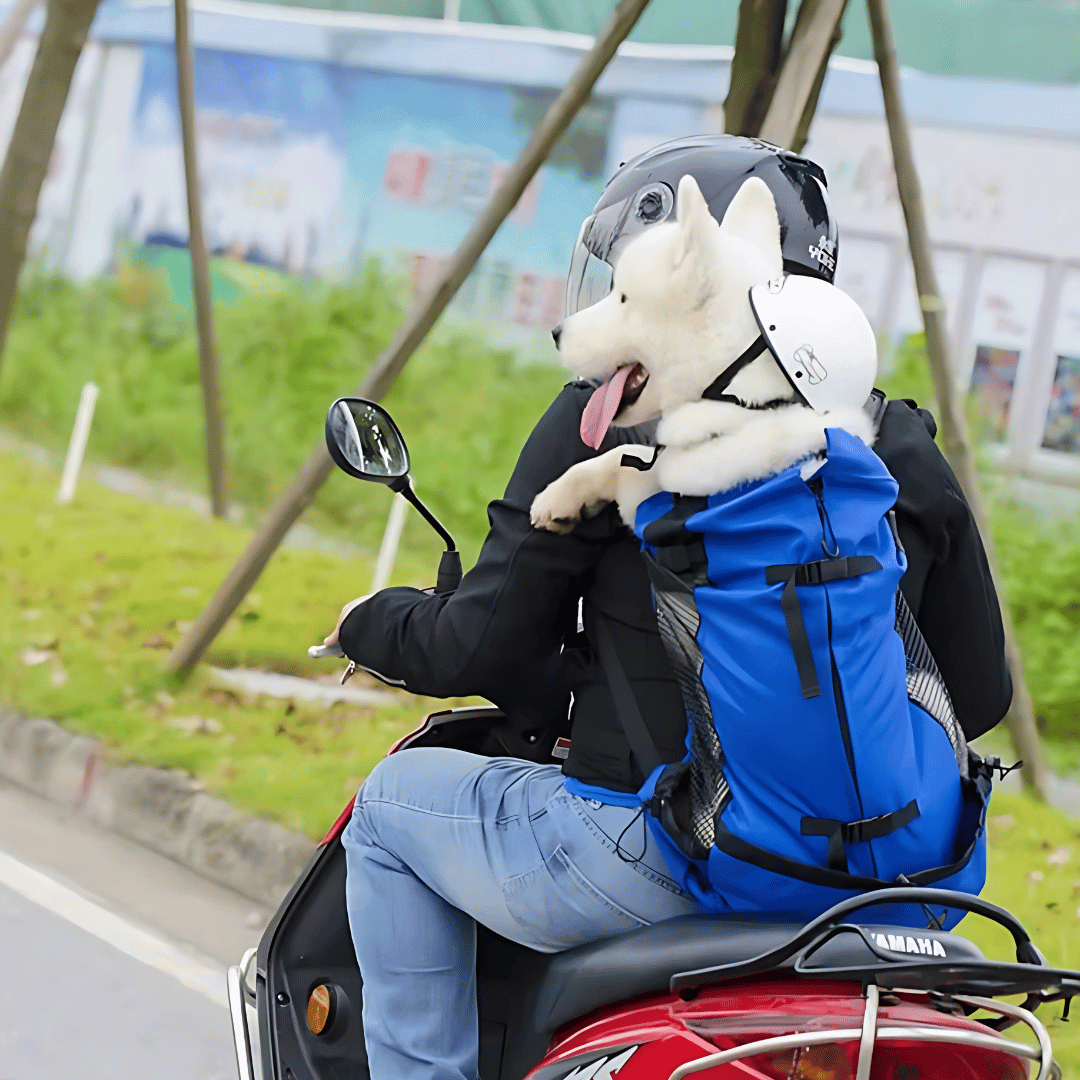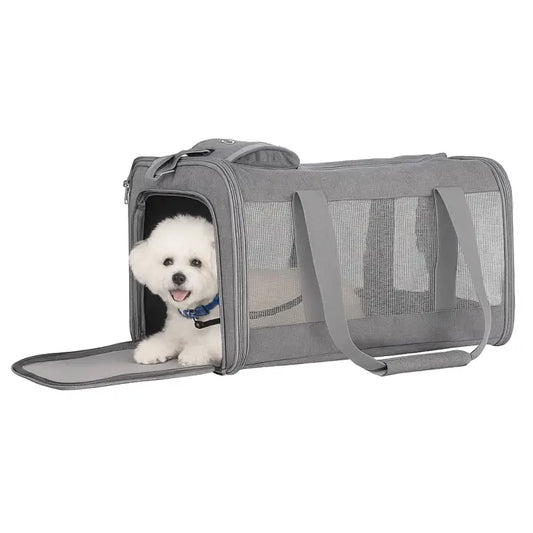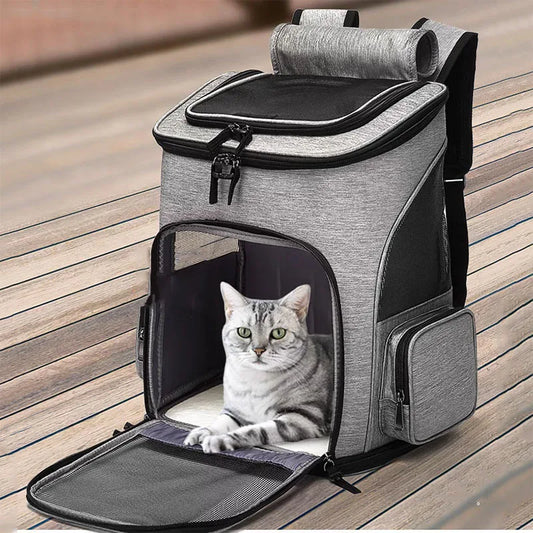
Traveling with Senior Dogs: Ergonomic Carriers and Low-Impact Adventure Tips
Share
As our older dogs age, their needs change, requiring careful consideration to ensure their comfort and safety during travel. Adapting your plans to accommodate their aging bodies is crucial for creating memorable experiences.
Understanding their limitations and planning accordingly can make a significant difference. This article will provide valuable insights on ergonomic carriers and low-impact adventures suitable for your aging companion, ensuring that you and your senior dog can enjoy travel together.
Key Takeaways
- Choose ergonomic carriers for comfort
- Plan low-impact adventures
- Consider your dog's health and age
- Pack essentials for a comfortable journey
- Research dog-friendly destinations
Understanding Your Senior Dog's Travel Needs
Traveling with a senior dog requires a deep understanding of their specific needs. As dogs age, they undergo various physical changes that can impact their mobility and comfort during travel.
Age-Related Changes That Affect Mobility and Comfort
Senior dogs often experience age-related changes such as arthritis, reduced flexibility, and decreased stamina. These changes can affect their comfort and mobility during travel. Regular veterinary check-ups can help identify any health issues that may impact your dog's ability to travel comfortably.
Assessing Your Dog's Travel Readiness
Before embarking on a journey with your senior dog, it's essential to assess their travel readiness. Consider factors such as their overall health, mobility, and any medical conditions they may have. Consulting with your veterinarian can provide valuable insights into your dog's travel readiness.
Benefits of Continuing Adventures in the Golden Years
Continuing to take your senior dog on adventures can have numerous benefits, including maintaining their physical health and strengthening your bond. Gentle, low-impact activities can help keep your dog mobile and engaged. By adapting your travel plans to your dog's needs, you can ensure they remain comfortable and happy.
| Travel Considerations | Benefits for Senior Dogs |
|---|---|
| Regular breaks during long trips | Reduces stiffness and discomfort |
| Comfortable, orthopedic bedding | Supports joints and improves rest |
| Gentle, low-impact activities | Maintains mobility and mental stimulation |
Essential Senior Dog Travel Tips for a Stress-Free Journey
Ensuring a comfortable and safe travel experience for your senior dog starts with preparation. As dogs age, their needs change, and being aware of these changes is crucial for a successful trip.
Pre-Travel Veterinary Consultations
Before embarking on any journey with your senior dog, a pre-travel veterinary consultation is essential. This visit helps identify any potential health risks and ensures your dog is up-to-date on all necessary vaccinations and medications. According to the American Animal Hospital Association, "older pets should have a veterinary checkup before traveling to assess their health and provide guidance on safe travel practices." Veterinary guidance is crucial in preparing your dog for travel.
Medication Management and Documentation
Managing your dog's medication is a critical aspect of travel planning. Ensure you have an adequate supply of your dog's medication, along with proper documentation. This includes a letter from your veterinarian explaining your dog's medical condition and the medication they are taking. Keeping medications in their original packaging and having a list of your dog's medical conditions can be very helpful. "Proper documentation can make a significant difference in case of a medical emergency during travel," notes a veterinary expert.
Creating Comfort Zones in Unfamiliar Environments
Creating a comfort zone for your senior dog in unfamiliar environments can significantly reduce their stress levels. Bringing familiar items such as their bed, favorite toys, or even a familiar blanket can provide reassurance.
https://www.youtube.com/watch?v=Os75tiEXAQU
Setting up a comfortable area for your dog in new environments helps them feel more at home. Consider the layout of your accommodations and try to recreate a familiar space for your dog.
By focusing on these essential travel tips, you can help ensure a stress-free journey for both you and your senior dog. Remember, the key to a successful trip is preparation and understanding your dog's specific needs.
Choosing the Right Ergonomic Carrier for Your Senior Dog
Selecting the right ergonomic carrier is crucial for ensuring your senior dog's comfort during travel. As dogs age, their joints become more susceptible to strain and discomfort, making it essential to provide adequate support.
Orthopedic Support Features to Prioritize
When choosing an ergonomic carrier, it's vital to prioritize orthopedic support features. Look for carriers with extra padding, memory foam, or orthopedic beds that provide superior comfort and support for your dog's joints. The carrier should also be well-ventilated to prevent overheating and ensure your dog's comfort during the journey.
Top Ergonomic Carrier Options for Small Senior Dogs
For small senior dogs, there are several ergonomic carrier options available. Two popular choices include soft-sided carriers with extra padding and backpack or sling options with lumbar support.
Soft-Sided Carriers with Extra Padding
Soft-sided carriers are lightweight and provide excellent comfort for small senior dogs. They often come with additional padding that can be customized to fit your dog's specific needs.
Backpack and Sling Options with Lumbar Support
Backpack and sling carriers distribute the weight evenly, reducing strain on your back while providing support for your dog. Look for options with lumbar support to enhance comfort during extended use.
| Carrier Type | Key Features | Benefits |
|---|---|---|
| Soft-Sided Carriers | Extra padding, lightweight | Customizable comfort, easy to carry |
| Backpack/Sling Carriers | Lumbar support, even weight distribution | Reduces back strain, comfortable for long periods |
Supportive Transport Solutions for Large Senior Dogs
For larger senior dogs, different transport solutions are necessary. Consider collapsible wagons or strollers and vehicle ramps or lifting harnesses.
Collapsible Wagons and Strollers
Collapsible wagons and strollers provide a comfortable and stable way to transport larger senior dogs. They are easy to maneuver and can be collapsed for convenient storage.
Vehicle Ramps and Lifting Harnesses
Vehicle ramps assist in gently guiding your dog into the vehicle, while lifting harnesses provide additional support during the lifting process, reducing strain on both you and your dog.
"The right equipment can make traveling with senior dogs a much more enjoyable experience for both the dog and the owner." - Pet Travel Expert
By choosing the right ergonomic carrier or transport solution, you can significantly enhance your senior dog's travel experience, ensuring their comfort and safety.
Road Trip Essentials for Elderly Canine Companions
Road trips with elderly canine companions demand attention to detail to guarantee a comfortable and enjoyable experience. As your dog ages, their needs change, and it's essential to adapt your travel plans accordingly.
Creating a Comfortable Car Setup with Orthopedic Bedding
One of the key elements in ensuring your senior dog's comfort during a road trip is the car setup. Investing in orthopedic bedding can provide the necessary support for their joints, reducing the risk of discomfort or pain during the journey. Consider using a high-quality, orthopedic dog bed that fits comfortably in your vehicle.
Planning Strategic Rest Stops Every 2-3 Hours
Regular rest stops are crucial for your senior dog's comfort and health. Plan to stop every 2-3 hours to allow your dog to stretch, relieve themselves, and get some fresh air. This can help prevent health issues such as urinary tract infections or joint stiffness.
Safety Equipment and Restraint Systems
Safety should be a top priority when traveling with your elderly dog. Invest in appropriate safety equipment and restraint systems, such as dog harnesses or crates, to ensure your dog's safety during the journey. These can help prevent injury in the event of sudden stops or accidents.
| Essential Item | Description | Benefits |
|---|---|---|
| Orthopedic Bedding | High-quality, supportive dog bed | Reduces joint pain, improves comfort |
| Dog Harness | Secure, comfortable harness | Prevents injury, keeps dog safe |
| Regular Rest Stops | Stops every 2-3 hours | Prevents health issues, reduces stiffness |
By focusing on these road trip essentials, you can create a comfortable and safe travel experience for your elderly canine companion.
Air Travel Considerations for Senior Dogs
The key to successful air travel with senior dogs lies in understanding airline policies, health requirements, and how to minimize travel stress. As dogs age, their needs change, and air travel becomes more complicated. It's essential to consider these factors to ensure a safe and comfortable journey for your senior dog.
Cabin vs. Cargo: Making the Safest Choice for Older Dogs
Deciding whether your senior dog should travel in the cabin or as cargo depends on several factors, including their size, health, and temperament. Smaller dogs that fit in an approved carrier under the seat in front of you can travel in the cabin, which is generally considered safer and less stressful. Larger dogs, however, may need to travel as cargo, which requires careful consideration of their health and the airline's cargo policies.
It's crucial to discuss your dog's specific needs with your veterinarian to determine the best travel option.
Navigating Airline Policies and Health Requirements
Each airline has its own policies regarding pet travel, including age restrictions, required documentation, and carrier specifications. It's vital to research and understand these policies before booking your flight to avoid any last-minute issues. Additionally, obtaining a health certificate for your dog from a licensed veterinarian within the required timeframe before travel is typically mandatory.
Preparing Your Senior Dog for the Flight Experience
Preparing your senior dog for air travel involves acclimating them to their carrier and reducing travel anxiety. Carrier acclimation should start well in advance of your trip, allowing your dog to become comfortable with their carrier through positive reinforcement techniques.
Carrier Acclimation Techniques
Begin by placing your dog's favorite treats and toys inside the carrier to encourage them to enter voluntarily. Gradually increase the time they spend in the carrier, making it a comfortable and safe space.
Reducing Travel Anxiety Naturally
To minimize travel anxiety, consider using natural calming aids such as pheromone diffusers, calming treats, or calming music designed for dogs. Consulting with your veterinarian can provide additional tailored advice for your dog's specific needs.
Senior-Friendly Accommodation Tips
When planning a trip with your senior dog, selecting the right accommodation is crucial for their comfort and happiness. As your dog ages, their needs change, and what worked for them in the past might not be suitable now.
Finding Pet-Friendly Lodging with Ground Floor Access
Opting for pet-friendly lodging that has ground floor access can significantly ease the strain on your senior dog. Stairs can be challenging for older dogs, so avoiding them is beneficial. Look for hotels, vacation rentals, or bed-and-breakfasts that not only allow pets but also offer easy access to the outdoors and comfortable resting areas.
Creating a Comfortable Temporary Home Base
Once you've found a suitable place to stay, creating a comfortable temporary home base for your dog is essential. Bring along familiar items like their bed, favorite toys, and blankets to provide a sense of security and comfort in a new environment.
Essential Items to Pack for Overnight Comfort
To ensure your dog's overnight comfort, don't forget to pack essential items such as their regular medication, a familiar blanket, and their favorite food. Having these items on hand can help reduce your dog's stress and make the stay more enjoyable.
Some key items to consider packing include:
- Your dog's orthopedic bed for support
- Familiar toys to provide comfort
- Any necessary medication
- Their regular food to maintain dietary consistency
Low-Impact Adventure Ideas for Senior Dogs
Low-impact activities can significantly enhance the quality of life for senior dogs by minimizing strain on their joints. As dogs age, their ability to engage in high-energy activities diminishes, making it essential to find alternative ways to keep them active and stimulated.
Gentle Nature Walks on Soft Terrain
Gentle nature walks on soft terrain, such as grass or dirt paths, can be particularly beneficial for senior dogs. These walks provide a low-impact way to maintain mobility without putting excessive strain on their joints. Soft terrain is easier on the joints compared to hard surfaces like concrete.
Water-Based Activities for Joint Relief
Water-based activities, such as swimming or hydrotherapy, offer excellent joint relief and can be very therapeutic for senior dogs. The buoyancy of water reduces the impact on joints, allowing for a more comfortable exercise experience. These activities can help maintain muscle tone and improve circulation.
Sensory-Rich Experiences for Mental Stimulation
Sensory-rich experiences, such as exploring new environments or engaging with different textures, can stimulate your dog's mind. Activities like scent work or simply visiting new places can provide mental stimulation and keep your senior dog engaged.
Dog-Friendly Tourist Attractions with Accessibility
Visiting dog-friendly tourist attractions that are accessible for senior dogs can be a great way to spend quality time together. Many attractions now offer accommodations for dogs, including ramps and ground-floor access. Researching these locations in advance can help ensure a comfortable and enjoyable experience for both you and your dog.
| Activity | Benefits | Tips |
|---|---|---|
| Gentle Nature Walks | Maintains mobility, reduces joint strain | Choose soft terrain like grass or dirt paths |
| Water-Based Activities | Provides joint relief, improves circulation | Consider swimming or hydrotherapy sessions |
| Sensory-Rich Experiences | Stimulates the mind, reduces boredom | Try scent work or visit new environments |
Managing Health Concerns While Traveling
When traveling with senior dogs, health concerns can arise unexpectedly, making it crucial to be prepared. As your dog ages, their health needs change, and it's essential to take proactive steps to ensure their comfort and safety during trips.

Senior-Specific First Aid Kit Essentials
A well-stocked first aid kit is vital when traveling with senior dogs. Include essentials like bandages, antiseptic wipes, and any medications your dog may need. Consider adding items like orthopedic supports or joint pain relief medication to help manage age-related discomfort.
Finding Emergency Veterinary Care Away from Home
Researching emergency veterinary care options at your destination can provide peace of mind. Look for 24-hour veterinary clinics or hospitals near your accommodations and keep their contact information handy. You can also ask your regular veterinarian for recommendations on emergency care providers in the area you plan to visit.
Recognizing and Addressing Travel Fatigue Signs
Travel fatigue can be a significant concern for senior dogs. Watch for signs like lethargy, loss of appetite, or increased anxiety. To mitigate travel fatigue, ensure your dog gets regular breaks during long trips, stays hydrated, and gets plenty of rest. Consider adjusting your travel plans to accommodate your dog's needs, such as breaking up long drives into shorter segments.
Conclusion: Creating Lasting Memories with Your Senior Dog
Traveling with your senior dog can be a rewarding experience, allowing you to create lasting memories with your loyal companion. By applying senior dog travel tips, such as choosing the right ergonomic carrier and planning low-impact adventures, you can ensure a stress-free journey for both you and your pet.
Low-impact adventures, like gentle nature walks and water-based activities, not only provide physical comfort but also stimulate your dog's mind, creating opportunities for cherished moments. As you explore new destinations together, you'll strengthen your bond and make memories that will last a lifetime.
By being mindful of your senior dog's needs and taking steps to ensure their comfort, you can enjoy a fulfilling travel experience together. Whether it's a road trip or a flight, with careful planning and attention to detail, you can create a lifetime of memories with your senior dog, making every moment count in your journey together.
FAQ
What are the key considerations when traveling with senior dogs?
When traveling with senior dogs, it's essential to consider their comfort, safety, and health needs, including their mobility, any medical conditions, and the necessary documentation.
How can I assess my senior dog's travel readiness?
Assessing your senior dog's travel readiness involves regular veterinary check-ups to identify any health issues that may impact their ability to travel comfortably.
What are the benefits of continuing adventures with my senior dog?
Continuing to take your senior dog on adventures can help maintain their physical health, strengthen your bond, and create lasting memories.
What are the essential tips for a stress-free journey with my senior dog?
Essential tips include pre-travel veterinary consultations, managing your dog's medication, and creating comfort zones in unfamiliar environments.
How do I choose the right ergonomic carrier for my senior dog?
Choosing the right ergonomic carrier involves considering orthopedic support features, the size and breed of your dog, and the type of travel you'll be doing.
What are some road trip essentials for elderly canine companions?
Road trip essentials include creating a comfortable car setup with orthopedic bedding, planning regular rest stops, and investing in safety equipment and restraint systems.
What should I consider when air traveling with my senior dog?
When air traveling with your senior dog, consider the safest travel option (cabin or cargo), navigate airline policies and health requirements, and prepare your dog for the flight experience.
How can I find senior-friendly accommodations for my dog?
Finding senior-friendly accommodations involves looking for pet-friendly lodging with ground floor access, creating a comfortable temporary home base, and packing essential items for overnight comfort.
What are some low-impact adventure ideas suitable for senior dogs?
Low-impact adventure ideas include gentle nature walks, water-based activities, sensory-rich experiences, and visiting dog-friendly tourist attractions with accessibility.
How can I manage my senior dog's health concerns while traveling?
Managing your senior dog's health concerns involves assembling a senior-specific first aid kit, researching emergency veterinary care options, and recognizing signs of travel fatigue.
What are some tips for reducing travel anxiety in senior dogs?
Tips for reducing travel anxiety include acclimating your dog to their carrier, using natural calming aids, and maintaining a familiar routine.






